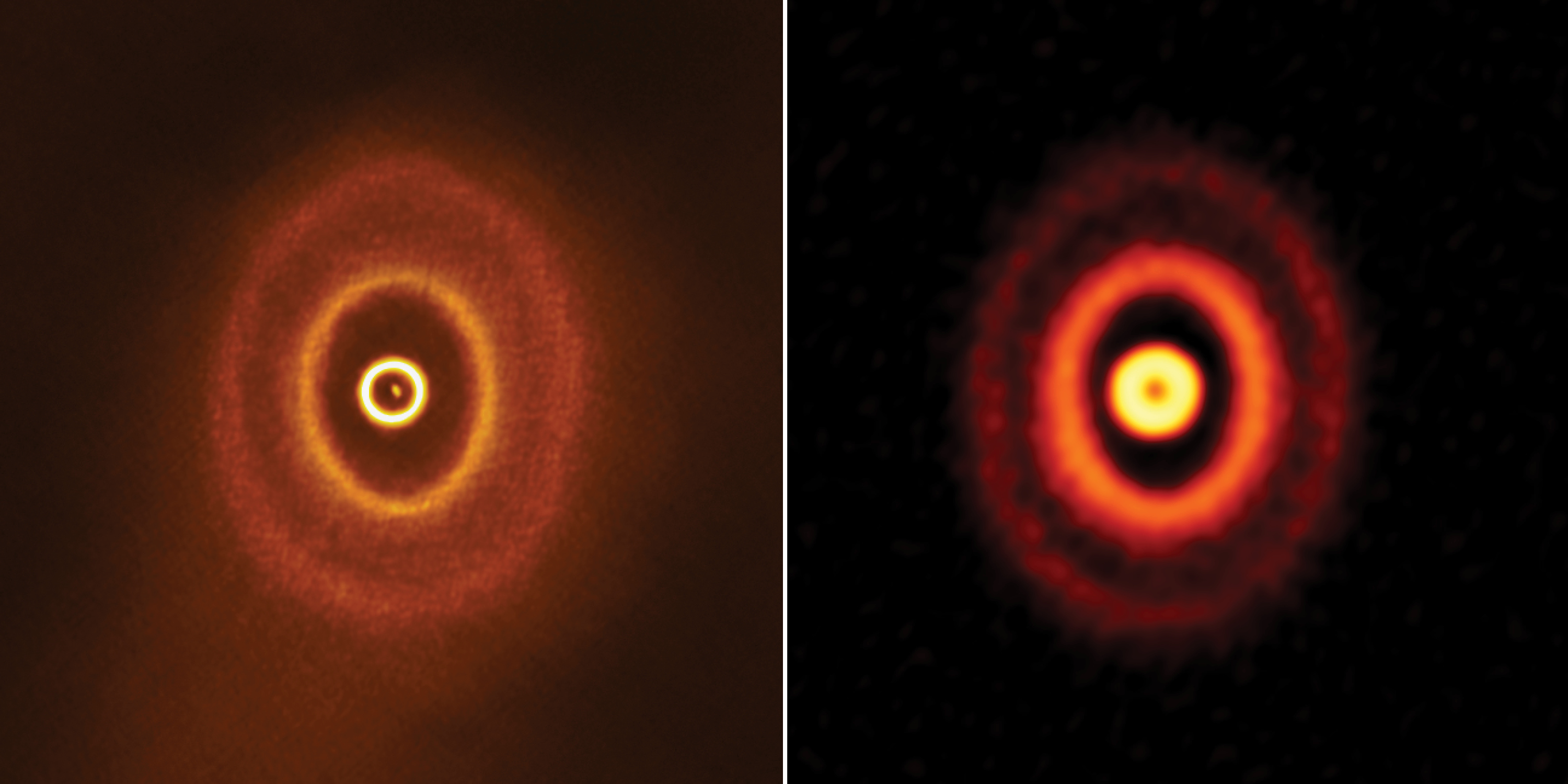In planetary disks, carbon monoxide is lurking in large chunks of ice, solving the decade-old question, ‘Where is the CO?’
Tag: Protoplanetary Disk
ALMA Reveals Carbon-Rich, Organic Birth Environments of Planets
An international collaboration of scientists using the Atacama Large Millimeter/submillimeter Array (ALMA) has completed the most extensive chemical composition mapping of the protoplanetary disks around five nearby young stars at high resolution, producing images that capture the molecular composition associated with planetary births, and a roadmap for future studies of the makeup of planet- and comet-forming regions.
Mind the Gap: Scientists Use Stellar Mass to Link Exoplanets to Planet-Forming Disks
Data from 500 young stars observed with the Atacama Large Millimeter/submilliter Array (ALMA) is giving scientists a window back through time, allowing them to predict what exoplanetary systems looked like through each stage of their formation. And it all starts with a link between higher mass stars, disks with gaps in them, and a high occurrence of observed exoplanets.

ALMA Discovers Misaligned Rings in Planet-Forming Disk Around Triple Stars
Using the Atacama Large Millimeter/submillimeter Array (ALMA), two teams of astronomers have for the first time discovered a planet-forming disk with misaligned rings around a triple star system, called GW Orionis. The astronomers give two possible scenarios for the misalignment: either…